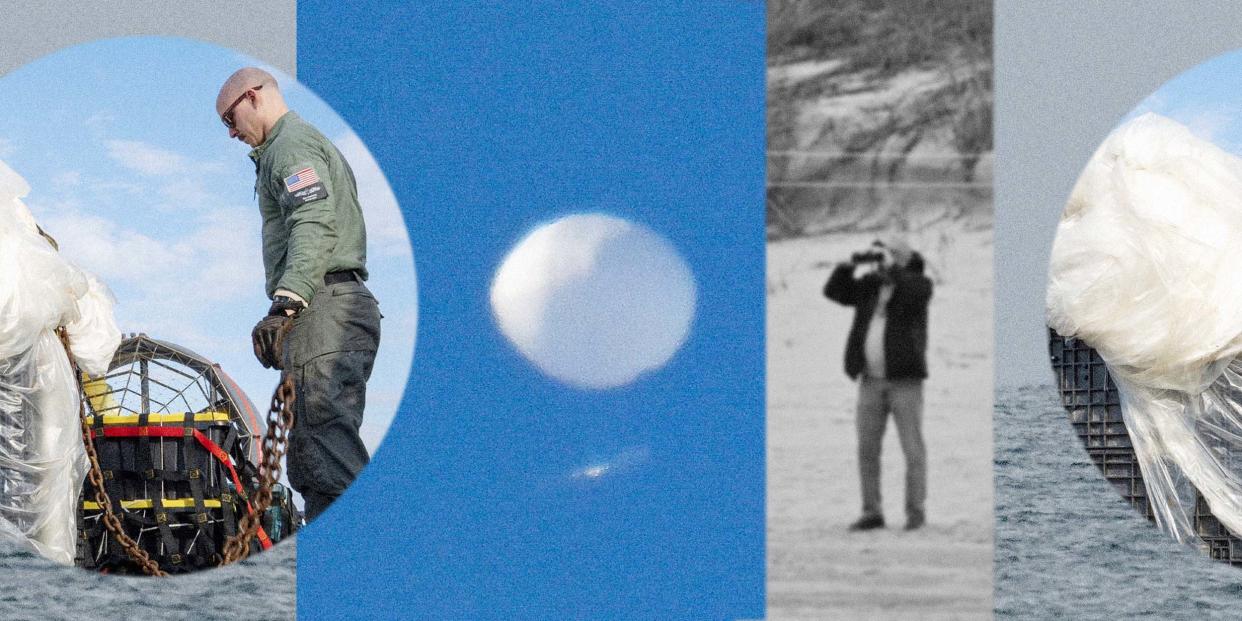If unidentified flying objects were weather or science balloons, that only deepens the mystery

The type and origin of the three unidentified flying objects shot down in North American skies last week remain a mystery, and the incidents have sparked further curiosity over what else may be floating around in our airspace.
As efforts to recover debris from the three objects are ongoing, the White House said Tuesday that the intelligence community is considering the possibility they were being used for commercial or benign purposes. But that explanation further deepens the enigma and raises questions about what exactly the objects were used for. Experts say it’s unlikely that weather or other scientific balloons would stray off-course or operate unnoticed for long periods of time.
The first of the three unidentified flying objects was spotted Friday, then shot down from an altitude of 40,000 feet above the northern coast of Alaska. An F-22 fighter jet downed the second, at the same altitude, on Saturday over Canada’s Yukon Territory. The next day, a third object was shot down from an altitude of 20,000 feet over Lake Huron, capping the three-day spree.
The baffling events came about a week after a high-altitude Chinese surveillance balloon was spotted drifting over Montana. An F-22 shot it down on Feb. 4, dialing up diplomatic tensions and heightening security concerns.
Some early reports suggested that the unidentified aerial objects might have been weather balloons or other high-altitude balloons used for scientific research, but no organization, company or individual has been linked to them so far. The National Weather Service on Tuesday confirmed to NBC News that none of the objects shot down in recent days belonged to the agency.
Kevin Tucker, president of the Oregon-based aerospace company Near Space Corporation, said high-altitude balloons used for science are typically well tracked and follow strict Federal Aviation Administration protocols.
Tucker’s company has spent more than two decades carrying out high-altitude balloon missions for NASA, the European Space Agency and commercial partners. He said there’s “almost zero chance” of such a balloon getting lost or drifting so far off course as to cause a national security incident.
“Do these just show up on radar? No, they don’t,” he said. “They’re completely tracked the entire time, and very accurately. You know where they are and who’s doing it. The element of surprise of one just showing up — that just doesn’t happen.”
Even if a company or research organization loses control of a balloon, there are ways to deal with such anomalies, Tucker added. In most cases, that involves redundant timers onboard that can trigger the balloon to self-terminate.
“There are a lot of steps taken to make sure these things just don’t take off and go forever,” he said.
Near Space Corporation’s balloons are used for a variety of scientific purposes, including dropping space capsules from high altitudes to test parachute-landing systems. The firm is also researching how balloons could be used on missions to Mars and Venus.
But these balloons typically operate at altitudes above 80,000 feet — higher than the three objects that were shot down.
In general, Tucker said, balloons offer a critical way to take measurements of the atmosphere. They're also essential for scientists studying weather patterns.
More than 100 weather stations around the United States launch balloons twice each day to help build out weather forecasts, said Holger Vömel, a senior scientist at the National Center for Atmospheric Research in Colorado. But such balloons are not designed to stay aloft for long.
“These balloons go up, they last somewhere around two hours, they burst, the instruments fall back down to the ground and that’s it,” Vömel said.
Susan Buchanan, a National Weather Service spokesperson, said the agency flew a weather balloon from Nome, Alaska, on Friday, but it popped and fell 30 miles northeast of where it launched. Another balloon was flown from Fairbanks on Friday but popped and fell 35 miles northeast.
“Weather balloons typically travel only 30-35 miles downwind from their launch site and quickly ascend to about 100,000 feet in the air, where they pop. They do not hover,” Buchanan said in an email on Friday.
Weather balloons are relatively small, measuring around 6 feet wide at ground level and expanding up to 20 feet at high altitudes. They also usually fly much higher than commercial and military aircraft.
While aloft, the balloons collect readings of temperature, wind, air pressure and humidity, Vömel said. Some have specialized purposes, such as to study ozone or map winds to gauge wildfire risks.
Vömel said it’s possible that a private hobbyist or group with the right resources could launch high-altitude balloons.
But he added that it's unlikely the three unidentified objects were wayward weather balloons.
“That should be a crazy concept,” he said. “Anything that’s above the size of a very small balloon should be coordinated with the FAA, which means they would know at any given moment where the thing is, where it’s coming from and who it belongs to.”
This article was originally published on NBCNews.com

